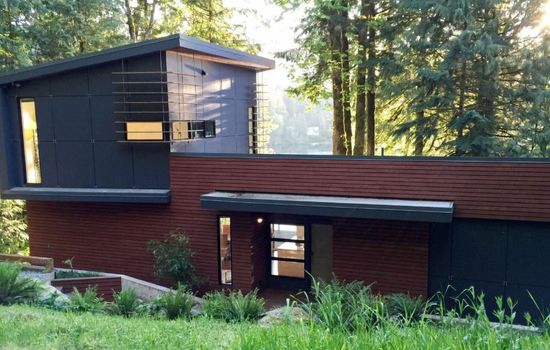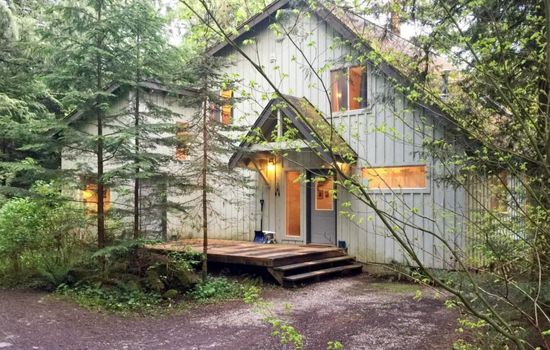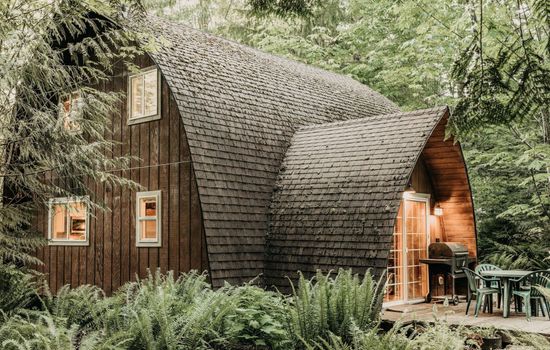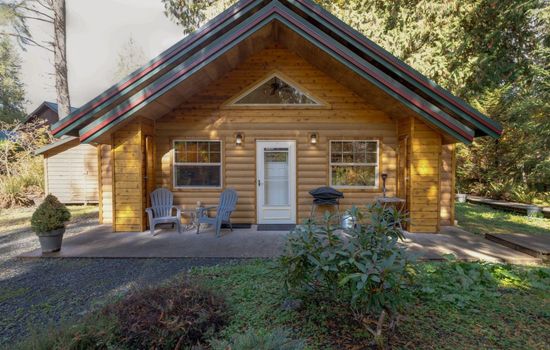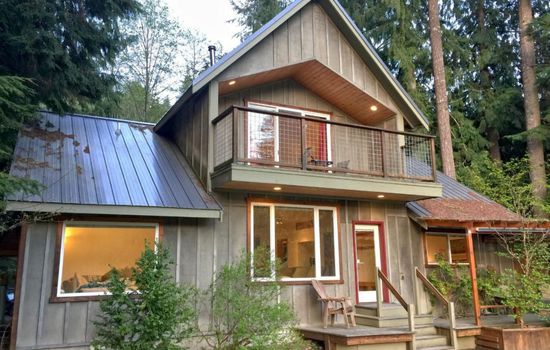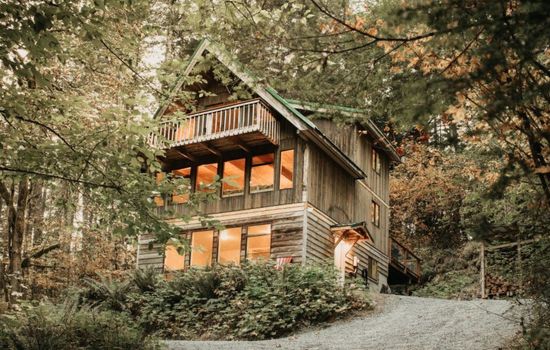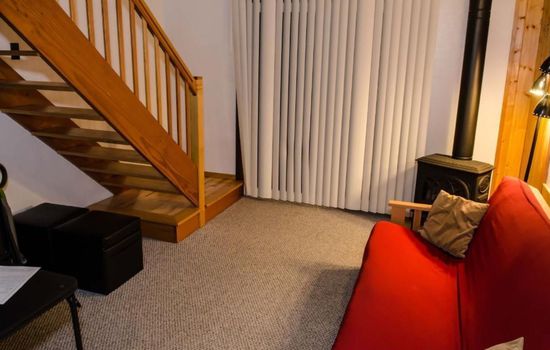The American Camp Visitor Center is open Thursday through Monday from 10 AM to 3 PM, closed on Tuesdays and Wednesdays. The English Camp Visitor Center is closed until it reopens in May 2025. Park grounds are open daily from dawn to dusk.
There is no entrance fee to visit San Juan Island National Historical Park. Entry is free year-round.
From Seattle, take I-5 North to Anacortes, then board a Washington State Ferry to this enchanting island, where historic camps and pristine landscapes await.
At San Juan Island National Historical Park, parking is free and available at several lots near the American Camp and English Camp units. No overnight parking is allowed. The lots accommodate cars, smaller RVs, and motorcycles. No fees apply for day-use parking.
Accessibility & permits
Emergency
- Cell service availability:Partial
Information not accurate?
Help us improve by making a suggestion.
San Juan Island National Historical Park, situated in the picturesque archipelago of the San Juan Islands, offers a kaleidoscope of natural and historical wonders. This 2,146-acre park is divided between two main sites: American Camp on the southernmost peninsula and English Camp on the northwest shore. Here, the Salish Sea meets rugged shores, just steps from lush forests, creating a diverse landscape ripe for exploration.
Hike the scenic trails of American Camp, including the summit of Mount Finlayson, or traverse the Bell Point Trail and Young Hill Trail at English Camp. The park’s beaches, such as South Beach and 4 July Beach, boast stunning views of the Olympic Mountains and are lined with massive driftwood bleached to a silvery sheen. Wildlife enthusiasts can spot orca whales, eagles, hawks, rabbits, and red foxes in their natural habitats.
The park’s historical significance is palpable at both camps, with surviving buildings from the British and American military occupations, including a commissary, barracks, blockhouse, and hospital. The Union Jack flies daily at English Camp, a unique tradition maintained by park rangers.
During the summer, the park comes alive with living history programs and outdoor activities like kayaking and foraging. Visitors can enjoy picnic settings amidst the native prairies and woodlands. For a closer look at the area’s rich history, the American Camp Visitor Center features an exhibit of artifacts such as glass bottles, arrowheads, and medals.
Nearby, the charming town of Friday Harbor offers a range of amenities, including local eateries and artisan shops. For outdoor enthusiasts, local outfitters provide kayak rentals and guided tours. As the seasons change, the park transforms with the blooming of wildflowers in spring and the vibrant foliage of autumn, making it a destination that beckons to be explored in every season.
- Area (mi²)
- 3.4
- Annual visitors
- 700 325
- Established year
- 1966
Top 3 Facts about San Juan Island National Historical Park
During the Pig War crisis, more than 500 U.S. Army soldiers and three British warships were positioned on the island’s southern shore, just 10 miles from Victoria, British Columbia, highlighting a tense but ultimately peaceful resolution to the border dispute.
This enchanting landscape is home to the world’s only viable population of the island marble butterfly, thought extinct for 90 years before its rediscovery. The American Camp prairie teems with foxes preying on rabbits, while bald eagles, harriers, and ospreys soar overhead. Harlequin ducks and American goldfinches add to the avian spectacle. In the waters, orcas, humpback, and gray whales make occasional appearances. The prairie also hosts a diverse array of flora, including rare species like brittle prickly-pear cactus and California buttercup, making this a paradise for nature enthusiasts.
Surrounded by the pristine waters of the Puget Sound, this scenic haven boasts saltwater shores and quiet woodlands, with the backdrop of the Olympic Mountains rising in the distance. The area is home to one of the last remaining native prairies and orca whales that frequent the waters, adding to its natural splendor. The shoreline stretches across nearly 590 acres, offering breathtaking vistas and a serene coastal experience.
Family programs
- Junior Ranger
- Ranger-led Tours
- Workshops & Hands-on Activities
- Living History & Cultural Demos.
Travel Tips
Plan Ahead
Plan a few days for summer visits to explore trails, beaches, and historic camps. Book ferry reservations in advance. Visit the visitor center first, and pack meals as options are limited. Attend a ranger-led program during summer months.
Pack Appropriately
Pack layers for unpredictable weather, sturdy hiking boots, and a waterproof jacket. Bring a multi-tool, dry bag, and a first aid kit. For camping, include a tent, sleeping bag, and portable cooking gear. Check the season for specific needs.
Respect Wildlife
Maintain a safe distance from wildlife, at least 25 yards, to avoid stressing animals. Never feed them, and dispose of trash properly to preserve natural behaviors and habitats. Stay on designated trails to minimize impact. Respect the environment as you would your own backyard.
Stay Informed
Stay on marked trails, avoid ledges and water areas, and check weather conditions. Follow park signs and rules. For emergencies, call 911 or park authorities at 360-378-2240. Stay informed about fire restrictions and other alerts.
Seasons
Visit in spring for mild temperatures (40s-60s°F) and fewer crowds. Enjoy driftwood-covered beaches, whale watching, and hiking through serene forests. While there are no specific annual spring events, the season offers ideal conditions for outdoor activities like kayaking and birdwatching.
Summer brings warm days (65-75°F) and mild nights to this historic park. Enjoy Music on the Lawn (July-August) and the San Juan Island Summer Arts Festival (August) amidst lush landscapes and scenic trails. Ideal for outdoor enthusiasts, with clear skies and gentle breezes. Perfect time to hike, bike, and immerse in local culture.
Experience autumn’s crisp air and golden foliage from September to November, with temperatures in the 50s and 60s. Enjoy the Savor the San Juans celebration, featuring farm-to-table dinners and winery open houses, amidst panoramic hikes and historic beaches. Ideal for a serene, cultural getaway.
Experience mild winter charm from December to February, with daytime temperatures in the 46-48°F range. Short days, occasional nor’easters, and rare snow make for a unique, serene escape from colder climates. Ideal for those seeking tranquility and crisp ocean air.
Information not accurate?
Help us improve by making a suggestion.
Where to stay
Frequently Asked Questions
Ready to dive into what San Juan Island National Historical Park has to offer? Let’s tackle some of the burning questions you might have as you plan your visit!
-
The closest city to San Juan Island National Historical Park is Friday Harbor, which is located on San Juan Island in Northwestern Washington State. Friday Harbor is about 9 miles from the English Camp and is the main town on the island.
-
The Jakle’s Lagoon Nature Trail is a good option for kids, as it is one of the most accessible trails on the island, with a generally wide and firm surface, though it does have a short steep section. This trail offers a cool forested ravine and a nice cove to explore. It is suitable for families with children who can manage a short incline.
-
Dogs must be on a leash no longer than six feet at all times within the park. This includes trails, roads, parking lots, and picnic areas. Retractable leashes that extend beyond six feet are not allowed.
-
Parking is free at this national historical park, regardless of the time of year or the type of vehicle you have. There are no entrance fees or parking charges.
-
The Pig War began on June 15, 1859, when American settler Lyman Cutlar shot and killed a pig owned by Charles Griffin, an Irishman employed by the Hudson’s Bay Company, after the pig was rooting in Cutlar’s garden on San Juan Island. This incident escalated into a border dispute between the United States and Great Britain, leading to a 13-year joint military occupation of the island until it was awarded to the U.S. in 1872. The conflict involved British warships and American troops but resulted in no human casualties.

